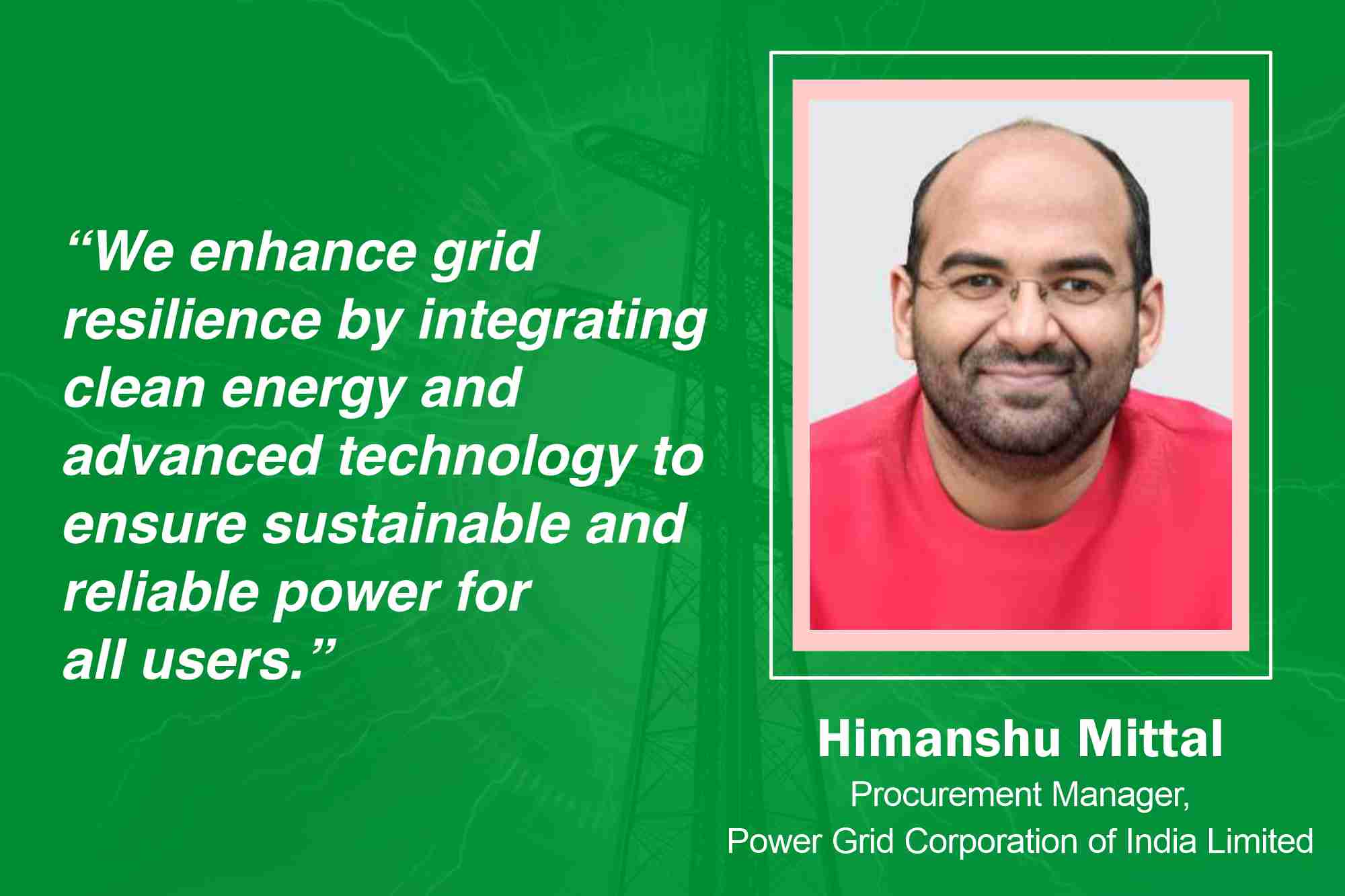Grids adapt to surge in RE with innovative solutions
By EPR Magazine Editorial July 25, 2024 4:45 pm IST
By EPR Magazine Editorial July 25, 2024 4:45 pm IST

Enhancing grid resilience by integrating clean energy and advanced technology ensures sustainable and reliable power for all users.
Himanshu Mittal, Procurement Manager- Power Grid Corporation of India Limited
Grid resilience refers to the ability of the power grid to remain stable, respond to, and recover rapidly from major disruptions. Integrating various forms of clean energy, such as solar, wind, and ammonia, into the grid is essential. However, this integration brings challenges. For example, solar and wind energy are highly dependent on climatic conditions. Energy is generated if the sun is shining or the wind is blowing. Conversely, energy production ceases if the sun is obscured or the wind stops.
Previously, the proportion of renewable energy in the grid was small enough not to cause significant issues. Renewable sources account for more than 20 per cent of the energy grid. In the first quarter of 2024 alone, India added a record 13,000 MW of energy generation, with 70 per cent coming from renewables. This substantial increase necessitates the development of technologies and systems to manage these frequent and sudden fluctuations.
Innovative solutions for managing energy demand and stability
Cities like Delhi, Chennai, and Mumbai face massive power demands and significant fluctuations in energy consumption. With the increasing use of air conditioners, it is estimated that by 2035, air conditioning alone will consume around 50 per cent of energy. Addressing these fluctuations and increasing demands requires innovative solutions.
Implementing more accurate forecasting methods can help manage electricity consumption and pricing. For instance, incentivising daytime electricity use with lower rates and penalising higher nighttime consumption can balance demand and supply.
Transitioning to smart grids across India can help manage frequent fluctuations. These grids can integrate solar rooftop programs, ensure energy is consumed locally, and reduce system stress.Initiatives like Tata Power’s 10 MW BESS can efficiently manage peak demand. Government tenders, such as the 500 MW tender in Gujarat, further support large-scale energy storage.
To prevent grid instability like the blackout experienced in 2013-2014, capacitor banks or Static Synchronous Compensators (STATCOMs) have been added. Isolating faulty grid parts and creating microgrids in remote or high-demand areas can ensure continuous power supply and reduce the impact of localised issues.
Recent developments
Despite environmental concerns, the government has allowed thermal power plants to add capacity to balance the grid. Developing offshore wind farms can provide a more consistent and clean energy supply compared to onshore wind farms. Large-scale battery energy storage systems are being developed to provide backup power to entire cities or states. Post-COVID, supply chain disruptions have significantly increased costs and delayed projects. Addressing these challenges is crucial for timely infrastructure development.
The increasing use of EVs demands more energy. By 2070, as per the Paris Agreement, India aims to be carbon neutral, which requires balancing EV usage with sustainable energy production. With more electronic devices connected to the grid, there is an increased risk of cyber-attacks. Ensuring grid cybersecurity is paramount to prevent disruptions. Enhancing grid resilience requires a multifaceted approach involving better forecasting, smart grid technologies, energy storage systems, and cybersecurity measures. These steps will help manage the increasing integration of renewable energy and ensure a stable, reliable power supply for the future.
We use cookies to personalize your experience. By continuing to visit this website you agree to our Terms & Conditions, Privacy Policy and Cookie Policy.